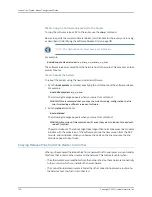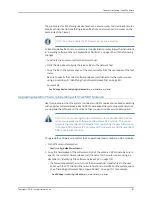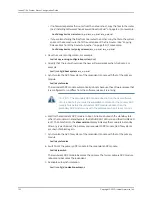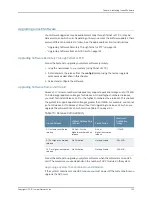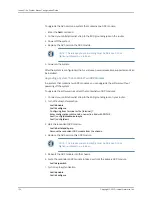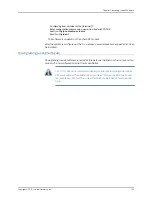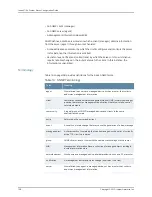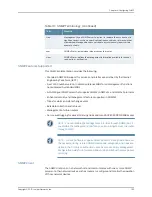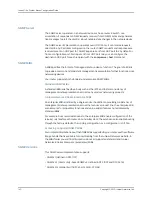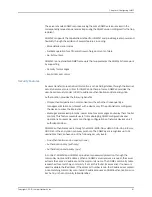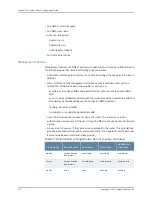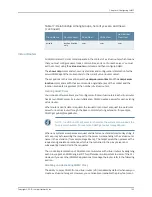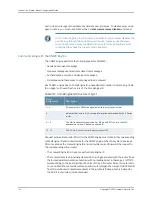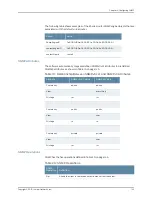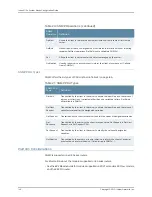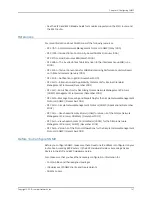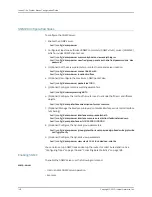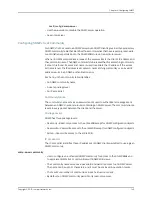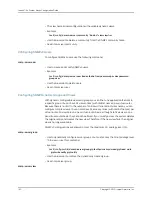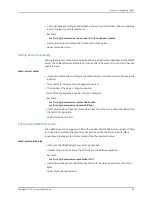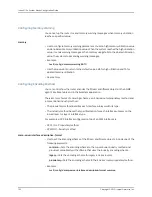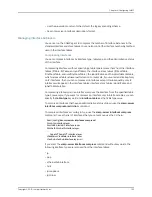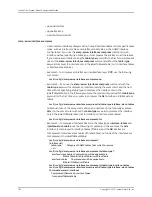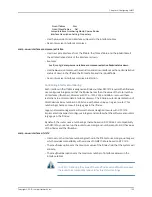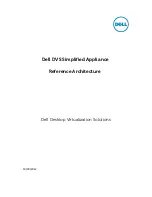
Table 17: Relationship Among Groups, Security Levels, and Views
(continued)
Notification/
Trap View
Write View
Read View
Security Level
Group Name
user
user
user
authentication
only
private
Virtual Routers
All SNMP-related CLI commands operate in the context of a virtual router, which means
that you must configure users, traps, communities, and so on for
each
server. You must
set the context using the
virtual-router
command and then configure SNMP.
The
show snmp
commands show only statistics and configuration information for the
server/SNMP agent that corresponds to the current virtual router context.
The exceptions to this convention are the
snmp-server contact
and the
snmp-server
location
commands. With these commands, single instances of the contact and the
location are created regardless of the number of virtual routers.
Creating SNMP Proxy
Your JunosE Software allows you to configure multiple virtual routers. Each virtual router
has its own SNMP server. At router initialization, SNMP creates a server for each existing
virtual router.
When router-specific data is required, the requestor can direct a request to a particular
server for a virtual router through the base community string extension: for example,
SNMP get public@megaRouter.
NOTE:
In addition to the @ selector character, the system also supports the
% selector character. For example, SNMP get public%megaRouter.
When any system server parses a request and detects an extended community string, it
acts as proxy by forwarding the request to the server corresponding to the virtual router
name in the extension (for example,
megaRouter)
. The target server then processes the
request and generates a response, which is then returned to the proxy server and
subsequently transmitted to the requester.
The JunosE implementation of SNMPv3 communicates with virtual routers by assigning
each proxy agent an SNMP engine ID
.
This difference is unimportant to users of the CLI.
However, if you use other SNMPv3 applications to manage the router, refer to the following
section.
Disabling and Reenabling SNMP Proxy
The ability to proxy SNMP from a virtual router (VR) is enabled by default whenever you
create a virtual router agent. However, you can disable or reenable the proxy feature on
143
Copyright © 2010, Juniper Networks, Inc.
Chapter 4: Configuring SNMP
Summary of Contents for JUNOSE 11.3
Page 6: ...Copyright 2010 Juniper Networks Inc vi...
Page 8: ...Copyright 2010 Juniper Networks Inc viii JunosE 11 3 x System Basics Configuration Guide...
Page 24: ...Copyright 2010 Juniper Networks Inc xxiv JunosE 11 3 x System Basics Configuration Guide...
Page 32: ...Copyright 2010 Juniper Networks Inc 2 JunosE 11 3 x System Basics Configuration Guide...
Page 146: ...Copyright 2010 Juniper Networks Inc 116 JunosE 11 3 x System Basics Configuration Guide...
Page 166: ...Copyright 2010 Juniper Networks Inc 136 JunosE 11 3 x System Basics Configuration Guide...
Page 432: ...Copyright 2010 Juniper Networks Inc 402 JunosE 11 3 x System Basics Configuration Guide...
Page 488: ...Copyright 2010 Juniper Networks Inc 458 JunosE 11 3 x System Basics Configuration Guide...
Page 524: ...Copyright 2010 Juniper Networks Inc 494 JunosE 11 3 x System Basics Configuration Guide...
Page 554: ...Copyright 2010 Juniper Networks Inc 524 JunosE 11 3 x System Basics Configuration Guide...
Page 566: ...Copyright 2010 Juniper Networks Inc 536 JunosE 11 3 x System Basics Configuration Guide...
Page 588: ...Copyright 2010 Juniper Networks Inc 558 JunosE 11 3 x System Basics Configuration Guide...
Page 613: ...PART 3 Index Index on page 585 583 Copyright 2010 Juniper Networks Inc...
Page 614: ...Copyright 2010 Juniper Networks Inc 584 JunosE 11 3 x System Basics Configuration Guide...
Page 632: ...Copyright 2010 Juniper Networks Inc 602 JunosE 11 3 x System Basics Configuration Guide...


